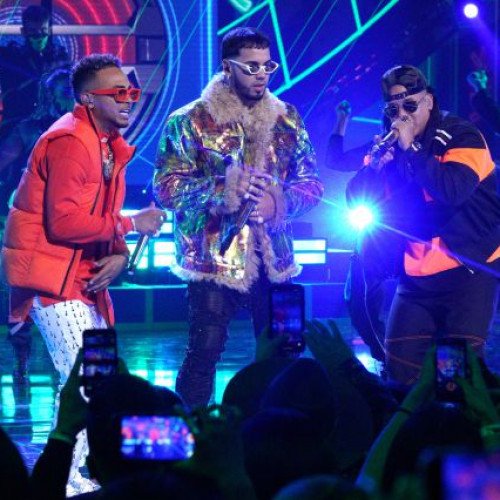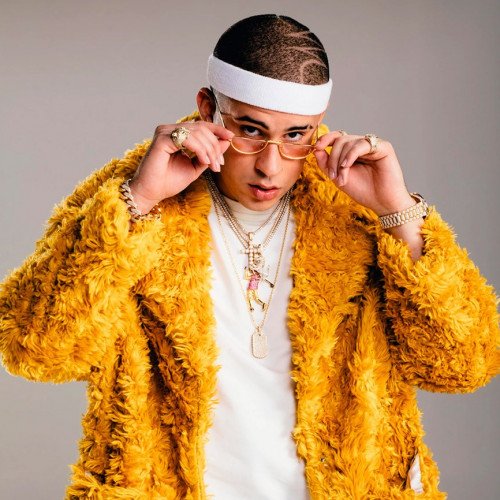Latin American musical genres

Reggaetón
Reggaeton (UK: /ˈrɛɡeɪtoʊn, ˌrɛɡeɪˈtɒn/,[1][2] US: /ˌrɛɡeɪˈtoʊn, ˌreɪɡ-/),[3][4] also known as reggaetón and reguetón[5] (Spanish: [reɣeˈton]), is a music style that originated in Puerto Rico during the mid-1990s.[6] It has evolved from dancehall and has been influenced by American hip hop, Latin American, and Caribbean music. Vocals include rapping and singing, typically in Spanish. Reggaeton is regarded as one of the most popular music genres in the Spanish-speaking Caribbean, in countries including Puerto Rico, Panama, Dominican Republic, Cuba, Colombia, and Venezuela.[7] Over the past decade, the genre has seen increased popularity across Latin America, as well as acceptance within mainstream Western music. The word reggaeton (formed from the word reggae plus the augmentative suffix -tón) was first used in 1994, when Daddy Yankee and DJ Playero used the name on the album Playero 36 to describe the new underground genre emerging from Puerto Rico that synthesized hip-hop and reggae rhythms with Spanish rapping and singing.[9] The spellings reggaeton and reggaetón are common, although prescriptivist sources such as the Fundéu BBVA and the Puerto Rican Academy of the Spanish Language recommend the spelling reguetón, as it conforms more closely with traditional Spanish spelling rules.
Statistics for this Xoptio

Trap
Trap is a subgenre of hip hop music that originated in the Southern United States during the early 1990s. The genre gets its name from the Atlanta slang word "trap," which refers to a place in which drugs are sold illegally.[2] Trap music uses synthesized drums and is characterized by complicated hi-hat patterns, tuned kick drums with a long decay (originally from the Roland TR-808 drum machine), atmospheric synths[according to whom?], and lyrical content that often focuses on drug use and urban violence.[3][4][5][6] It utilizes very few instruments and focuses almost exclusively on snare drums and double- or triple-timed hi-hats. This is the signature sound of trap music.[7][8] Pioneers of the genre include producers Kurtis Mantronik, Mannie Fresh, Shawty Redd, Zaytoven, and Toomp, along with rappers Young Jeezy, Drama, Gucci Mane and T.I. (who coined the term with his 2003 album Trap Muzik). However, the modern trap sound was popularized by producer Lex Luger, who produced the influential Waka Flocka Flame album Flockaveli in 2010, and cofounded the prolific hip-hop production team 808 Mafia.[2] Since crossing over into the mainstream in the 2010s, trap has become one of the most popular forms of American music, consistently dominating the Billboard Hot 100 throughout the decade, with artists such as Drake, Kendrick Lamar,Cardi B, Migos, Lil Uzi Vert, 2 Chainz, Post Malone, XXXTentacion, and Travis Scott (among many others) all achieving No. 1s on the chart with songs that belong to the trap subgenre.[9][10][11][12][13] It has influenced the music of many pop artists, such as Ariana Grande, Beyoncé, Miley Cyrus, Demi Lovato, Rihanna, Taylor Swift and Selena Gomez.[2][14] Its influence can also be heard in reggaetón and K-pop.[14] In 2018, hip-hop became the most popular form of music for the first time ever (according to Nielsen Data), coinciding with trap's continued rise in popularity.[15] In 2019, the trap-inspired country/rap crossover "Old Town Road" by Lil Nas X (featuring Billy Ray Cyrus) broke the record for spending the most weeks (19 weeks) at No. 1 on the Billboard Hot 100 chart, as well as becoming the fastest song to reach a Diamond Certification.